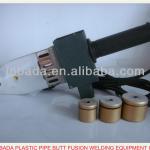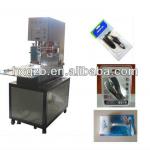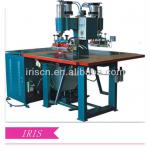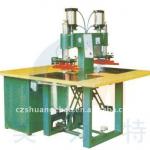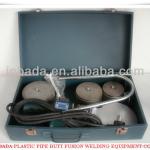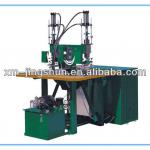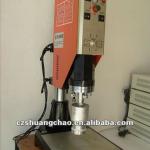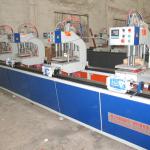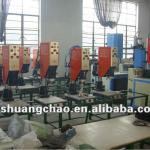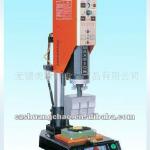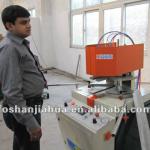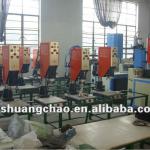Ultrasonic Plastic Welder for PP/ABS/Fabric/Acrylic
| Place of Origin:Jiangsu China (Mainland) | Brand Name:Changchao | Model Number:XD2615 | Voltage:220V |
| Power:2600W | Frequency:15KHz | Welding Area:Max 150 * 150 mm | Dimensions:700*500*1200 mm |
| Weight:110kg | Usage:welding plastics,cutting fabric |
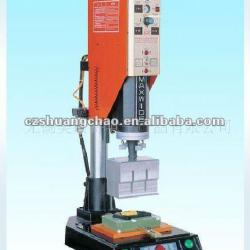
a. Ultrasonic Plastic Welding Machine
b.Can weld thermosetting plastic except Teflon.
c. Extremely short welding time, normally within 0.05~1 second.
d.Safty protection
e. Improve production capacity
1. Principle of ultrasonic welding
The fundamental principle for work is to take the advantage of transducer to convert the high frequency electronic energy into high frequency mechanical vibration. When ultrasonic welding is applied to plastic components, the high frequency vibration of 20000cylces/sec.(20KHZ) can generate a high speed friction measured as 20000 times/s between plastics and plastics, and plastics and metal, which makes the plastic to be melted. Two modes of welding can be classified as follows:
Direct welding: first overlap the ma terials such as wire or strip and then fasten it on the fixture on the plastic welding machine, so the Primary Energy converter (HORH) can directly produce sound wave vibration on it to achieve the welding effect.
Conduction welding: during welding, the ultrasonic vibration is separated from a distance and welding is effected through sound wave vibration conducting.
2. Features
A. Can weld thermosetting plastic except Teflon.
B. Extremely short welding time, normally within 0.05~1 second.
C. Welding can be done on the joint immerged in media like water and oil.
D. Welding effects can reach the levels of air-tightness and liquid-tightness.
E. Direct and conductive welding available.
F. Welding energy is determined by the nature of plastics, materials not necessarily all of ultrasonic vibration types, only the appropriate thermal vibration surface should be chosen. Thus the product surface is scratch free, which is the feature of conductive welding. If the plastic materials are relatively hard, the welding effect is even better.
G. Ultrasonic welding won’t produce the toxicity like the chemicals, it is safe.
H. No adhesive needed, easy and fast operation.
3. Application
The ultrasonic wave is widely used in many fields, such as medicine and military, as we have known. It is also widely used in industrial fields, like ultrasonic cleaning, ultrasonic welding, ultrasonic grinding and polishing, etc. With regard to ultrasonic welding, the related operations include: 1) Welding; 2) Planting; 3) Molding; 4) Riveting; 5) Spot welding; 6) Shake-down (cutting); 7) Thermal melting.

| Packaging Detail:wooden packing |
| Delivery Detail:7 days |



